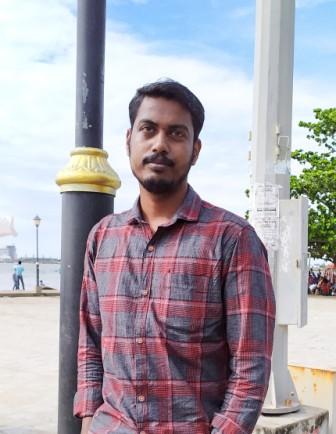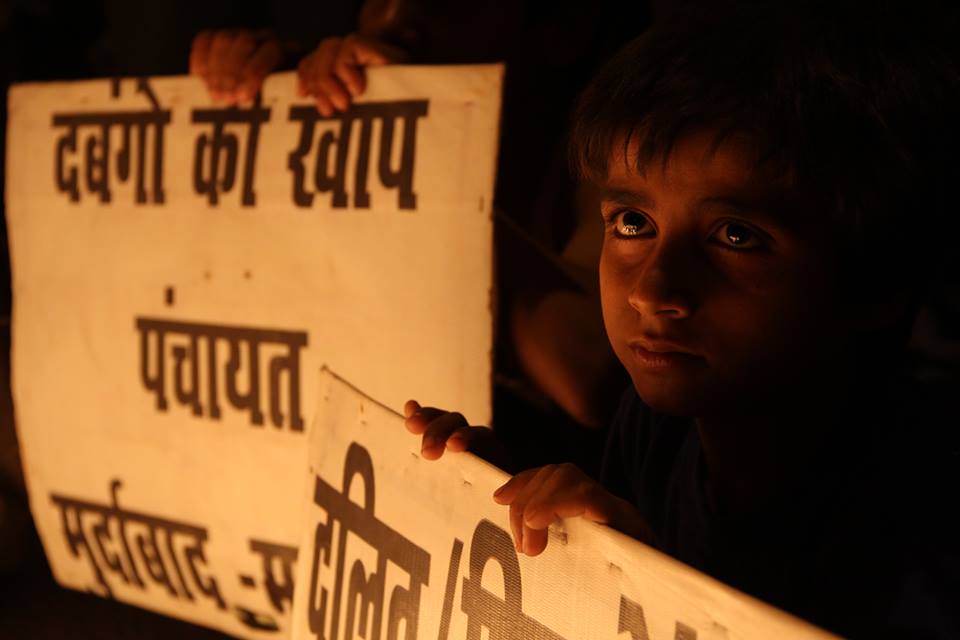Thongam Bipin
 Khudei is traditionally a Meetei word for a piece of cloth which the Meetei men wear around their waists. It is worn on various occasions: when he is at home, sometimes at a family feast and other specific occasions. It carries value and culture and signifies a particular lifestyle. It also indicates age as it is mostly worn by old people. However, Khudei is markedly different from the Phanek which the Meetei women wear around their waists. Phanek is both sacred and profane while Khudei lacks such outright sacralisation and condemnation at the same time. Such a sharp difference of perception of the two items of clothing stems from the patriarchal social structures and value judgement of Meetei society. My focus here is Khudei and would not be touching upon this point and Phanek.
Khudei is traditionally a Meetei word for a piece of cloth which the Meetei men wear around their waists. It is worn on various occasions: when he is at home, sometimes at a family feast and other specific occasions. It carries value and culture and signifies a particular lifestyle. It also indicates age as it is mostly worn by old people. However, Khudei is markedly different from the Phanek which the Meetei women wear around their waists. Phanek is both sacred and profane while Khudei lacks such outright sacralisation and condemnation at the same time. Such a sharp difference of perception of the two items of clothing stems from the patriarchal social structures and value judgement of Meetei society. My focus here is Khudei and would not be touching upon this point and Phanek.
I am not here to narrate the mode of production and exploitation involved. That will require a different approach. Neither am I interested in its usefulness and the cultural aspect of it in the Meetei society of Manipur. However, my story of Khudei is personal and political at the same time, provoked by violence perpetrated on the people of Manipur.
Meaning of Khudei
Growing up in the last decade of the last century in Manipur, my native place, my identity is entangled with Khudei and I have become inseparable from it. Entanglement with Khudeii can be ascertained in two aspects. First, Meetei men wear Khudei at home. It was a natural and pre-determined entanglement being a Meetei. Also, liberalization had not reached Manipur and it seemed to me that most of the people in Manipur were poor then! Khudei was cheap. However, the village set up in which I grew up also played a crucial role in this entanglement of the first kind. Secondly, the natural and pre-determined entanglement with Khudei became an enforced one during this time. Khudei became a signifier of the home of a different kind, a new signifier which was enforced on the people during this decade.
This new meaning created new citizens who were loyal, submissive and tolerant of Indian military might while constantly blaming and suspecting the armed groups because of their power and ideology. These new citizens were reproduced through various means, but I would insist that Khudei became one such significant agent of the Indian state at the same time. Perhaps, this entanglement, the enforced entanglement otherwise once natural, is the one I am currently obsessed with. My entanglement with Khudei both literally and metaphorically hopes to narrate the entanglement was necessitated as a consequence of the encounter and engagement with the Indian state. This entanglement pervades the psyche of the people who grew up during that decade and not so much today. This serves before us the bloody violence that we witnessed during the last two decades of the last century.
Khudei at Home
Khudei was potentially a lifesaving attire, or we thought so. When I was growing up, mother made sure that we (I have two elder male siblings) all wore Khudei when at home, particularly so, in bed, at night. My mother’s anxiety and strict adherence to wearing Khudei in this particular context has less to do with culture or the comfort of wearing it in bed. It is entangled within and represents the larger socio-political reality of the place and time.

Man wearing a Khudei around his waist
When I was growing up, Khudei meant ‘home’ not in the Tagorian or the post-colonial sense. I abhor their home-world binary. Post-colonial nationalists refuse to see how their ‘home’ is oppressive to others. It is too late for a realization now; it has achieved what it tended to achieve with its propagation of home. It is precisely the propagation of Tagore’s home that the military presence in Manipur represent/ed. Tagore’s home was the flagship of the Indian military might in the Northeast, Jammu and Kashmir. It is in this encounter that Khudei begins to produce a different cultural symbol, of oppression and violence of a state which Manipur became part of in 1949.
During the last decade of the last century, Khudei became a marked clothing that distinguishes one person from another: a legitimate, obedient citizen from an unlawfully armed person. Back then, there were stories and incidents circulated about young boys and men arrested and questioned for wearing long pants in bed. Imagine a situation where one had to explain why he was in pants at home or bed! Questioning for wearing a particular western attire was part of the logic of state surveillance where one had to explain his activities outside home. The relation here was that an insurgent who left home or didn’t have a home now because he had left home should basically be the one who should be wearing the pants. Because such a correlation existed then, even though the armed groups had massive support from the common people, the people had to constantly mark a difference in appearance while at home through an act of wearing the Meetei loincloth, Khudei.
The logic in such a story is that pants symbolise outdoors, therefore, to wear pants in bed meant that the man just came back home, or was always ready to flee from home. The underlying meaning was, why should a person run away from home? Why was a man who should be at home, not home? Meaning that wearing pants is not being completely at home. Thus, trying to flee from home? To be called at home, one needed to be in khudei. Therefore, the logic was that a person who was wearing pants at home was to flee away before the ‘lawful’ state armed personnel reached home. The allegation was that one flees from home because he is an insurgent. It, thus, made every individual’s body a sight of interrogation and a suspect of the Indian state. Because such a militaristic reasoning was fused with pervasive surveillance, one was left without a choice but to wear Khudei when at home. Mother insisted that as soon as we returned home we changed from our pants to Khudei.
The distinction between the two aspects of wearing Khudei at home was that the first aspect had a choice in a limited sense, but the second did not. The second aspect compelled a person into wearing it, it interpellates a tradition of wearing a clothing in order to extract and create a new subject. The logical conclusion one can garner from Khudei and its various uses at home during this period was that it gave new signification to a domesticated, frightened and tamed Indian citizen in a faraway place from Delhi. Security personnel, as a part of combat measures, reproduced different Khudei wearing men during this period.
Is Khudei Safe?
During military combing operations, as every house was a potential camp, security forces looked for men in pants. Once during a combing operation at night, my mother screamed at us to make sure that we all were wearing Khudei. We had to change immediately to Khudei before the security broke into our house. One wonders why most of the combing operations were conducted at night? Maybe, it is easy to arrest insurgents at night on the basis of what they wear? Khudei! Or to make one insurgent! One of the music bands from Manipur, Easter Dark, sings thus:
Khudei setlaga thokkhiba
Camou setlaga hallakpa lam
Sendan tonglaga thokkhiba
Boot tonglaga hallakpa lam
(In Manipur, one who went out wearing khudei
Comes back wearing a camouflage],
One who went out wearing a slipper
Comes back wearing a boot) (Rough translation)
It was evident that wearing of Khudei didn’t make one’s life assured. It was that at that moment of confrontation with the state armed personnel, family, the concerned person or the Leikai (locals) or the Meira Paibis had a strong case at hand to prove that the person was innocent. However, as Eastern Dark sang, one can be arrested when he is wearing a Khudei but can always return wearing pants, here, camouflage; or a pair of slippers could be replaced by boots. He comes back home dead wearing pants, an uncanny symbol of home. When a person was forcefully put in pants and boots, the case for him was closed there, he became an insurgent already.
~~~
Thongam Bipin has a Ph.D. from the University of Hyderabad. He currently lives in Imphal.
Image courtesy: the internet.










